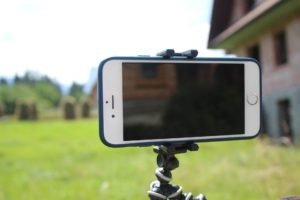The Video Revolution in the Age of Remote
 While we are well aware of the fact that people have been untethering from television for quite some time, viewership has also been plummeting when it comes to the various mainstream news services. The numbers are in a free fall.
While we are well aware of the fact that people have been untethering from television for quite some time, viewership has also been plummeting when it comes to the various mainstream news services. The numbers are in a free fall.
While the term ‘fake news’ has been bandied about ad nauseam and has become so much part of the patois that social media also affixes ‘potential fake news’ labels on tweets and posts that are not in lockstep with the media talking points. But no matter what’s reported, note to self: who can’t grab a photo or video with their phone these days? What the media reports, thanks in no small part to editing and green screen, and what onlookers post can sometimes seem like alternate realities and given this, even the major news outlets no longer have a monopoly over the message.
Publications are no longer necessarily authentic in their reporting, either. Prior to the last election, we’d do our usual perusal of tech articles, and noticed that the reporters always added a political aside which would have nothing to do with the story itself or the technology that was being featured. We began unsubscribing: How could we trust a reporter who was writing about, say, a dating app, then slipped in, say, a climate change aside, which had nothing at all to do with said app? The trust was gone. So long, and thanks for all the fish.
We tend to avoid the term ‘fake news.’ Considering the unnecessary asides and agendas (New York Times used ‘deceptive disinformation’ to smear Project Veritas, acted with ‘reckless disregard’ and ‘malice’, judge rules), we prefer the term ‘agenda journalism,’ ‘manipulative media’ or to defer to Plato, the noble lie.
Which brings us to entrepreneurs and the use of video in the Age of Remote. With retail and products moving online and so many people still more comfortable only leaving home on an as-needed basis, consumers may not want to go out and physically examine products – what to speak of new products that might not yet be available in a brick and mortar, or software – be it consumer or enterprise level –, and with people having more time on their hands since they are working remotely, video can be a newcos best friend. This may well be an age and opportunity for new product discovery. Video, baby, and a few things to keep in mind
First, do make sure to tell a story – and an engaging one. Also consider the downward spiral in news viewership as a cautionary tale: authenticity and veracity count.
Next, don’t have your CTO or developers script the video. Best to have a non-technical member of the team do it – or at least vet it. Many people are working remotely. They can’t ping tech support to help with the install or explain how to use the product, and many early-stage startups don’t have the bandwidth to do tech support, anyway.
Many of you make that same mistake in your investor pitch decks. Keep it simple and understandable to the lay person.
Again remember that everyone has a video camera on his/her phone, which makes client testimonials and even video pitch decks easy to do. A good voiceover might make it even more entertaining or compelling
There are plenty of free video editing tools available as well.
Investors/clients/partners/new users might like your video. Especially if it’s helpful and getting likes. And conversions.
The cohorts at most accelerator demo days show a video explainer of their product/solution. These videos are always short, concise, engaging – and to the point, avoiding unnecessary asides. Consider: building an audience is tough. Losing one – much easier. The devil is in the details, so present and edit wisely. The world is changing – as is the ways in which you can deliver your message. Just because the printed word was the way it always has been done, doesn’t mean that it’s the way it always can and will be done. All you need to do is to take a look at the rise of citizen video and citizen journalism. Think reporters outside of the mainstream media don’t have an audience? Radio ruled until television came along and it wasn’t all that long ago that video killed the radio star. Just keep it simple, keep it authentic and keep it smooth. Ask those formerly influential news orgs: the last thing you want is death by a thousand cuts. Onward and forward.